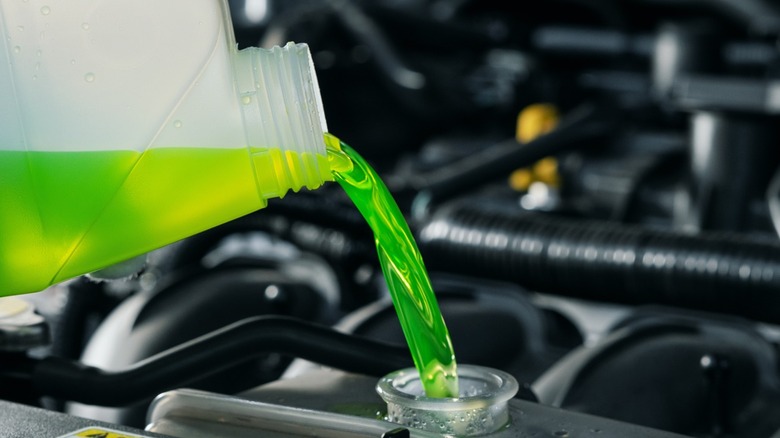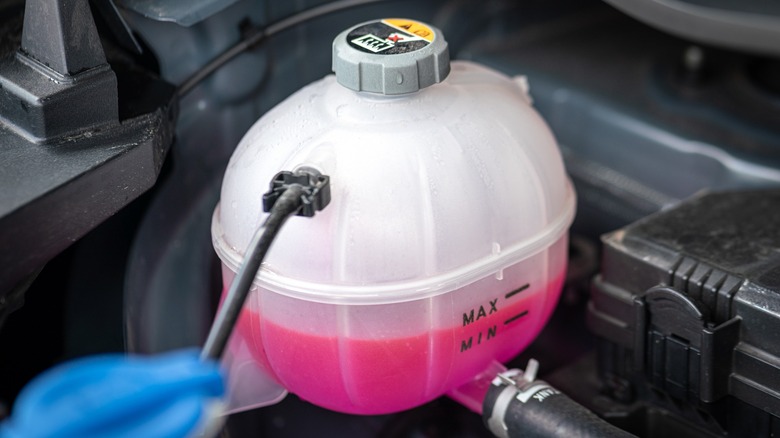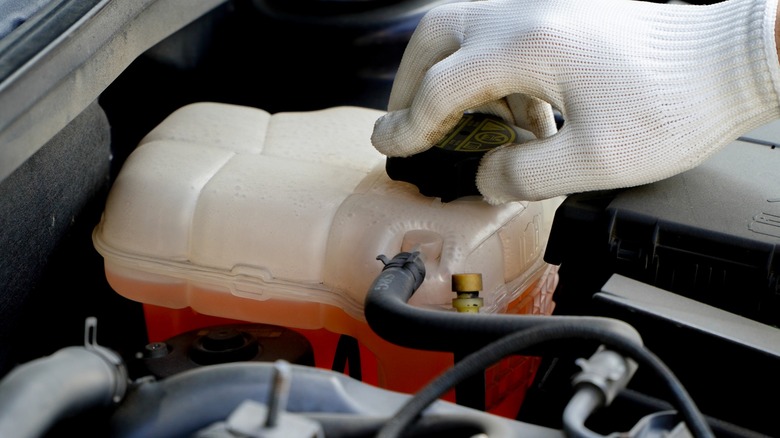Engine Coolant Colors Explained: Which Is Best For Your Car?
Most folks are aware that having a full coolant system is extremely important. Without proper cooling, your engine can overheat and cause severe damage or all-out destruction to your engine. However, some folks may be unaware that their vehicle requires a specific type of coolant. Mixing coolant types can also have expensive consequences, such as clotting and blockage of your cooling system. This can cause failing water pumps, overheating, and the same detrimental engine failure.
There are three major types of coolant found in major automotive manufacturers: IAT, OAT, and HOAT. Let's take a look at the key differences between these coolants and which manufacturers typically use each type. It is worth keeping in mind, though, that some manufacturers have changed the types of coolant they use over the years. So, if you're looking to top off your coolant or flush your cooling system, the best way to know exactly what type of coolant you need is to call your local dealership, give them your VIN, and get the info directly from them.
The three major coolant types
Inorganic Additive Technology (IAT) coolant is the oldest and most recognizable antifreeze out there. It's bright green in color and is typically found in older vehicles. The term "inorganic" comes from the fact that they use silicates as heat inhibitors. They're great for cast iron, brass, copper, and aluminum parts in older vehicles. However, they should be changed every two or three years or 30,000 to 45,000 miles.
On the other hand, Organic Acid Technology (OAT) uses Organic Acids as the inhibitor. It's orange in color and is typically found in GM, Saab, and Volkswagen vehicles. The typical lifespan is around five years or 150,000 miles. This coolant is typically interchangeable with the term "Dex-Cool." Hybrid Orangic Acid Technology (HOAT) coolants — which come in a handful of variants — use a blend of both worlds. The most common one is yellow and is found in Ford, Chrysler, and European vehicles. HOAT coolants can last up to 10 years or 180,000 miles.
NAP-free HOAT coolants are made without nitrates and typically have a turquoise/blue color; you'll find them in BMW, Volvo, Tesla (for battery cooling), and Mini vehicles, largely. Finally, Si-OAT is a form of HOAT coolant that is purple — it's found in Mercedes-Benz, Audi, Volkswagen, and Porsche vehicles.
Use the right coolant, and replace it properly
The best way to be completely sure you're getting the right coolant for your vehicle is to call your manufacturer's dealership with your VIN. Alternatively, you could take the vehicle to the dealership to ensure you're getting the correct coolant, and you can buy it from them, too — though that can sometimes be quite expensive. Your mileage may vary.
If you're performing maintenance to a cooling system on a used vehicle, there's a chance someone in the past may have put the wrong coolant in. Additionally, some manufacturers have switched coolant types and no longer offer the outdated version. In scenarios like these, especially if you don't know the history of the vehicle, it is imperative to perform a complete cooling system flush. Starting with a clean system drastically reduces the chance of problems from cross-contamination. Ultimately, if you're just looking to top off your coolant from heat evaporation or you lost some during a repair and need to refill, so long as you're sure of what coolant is already in the car, it's safe to just add the same coolant to fill the system.


